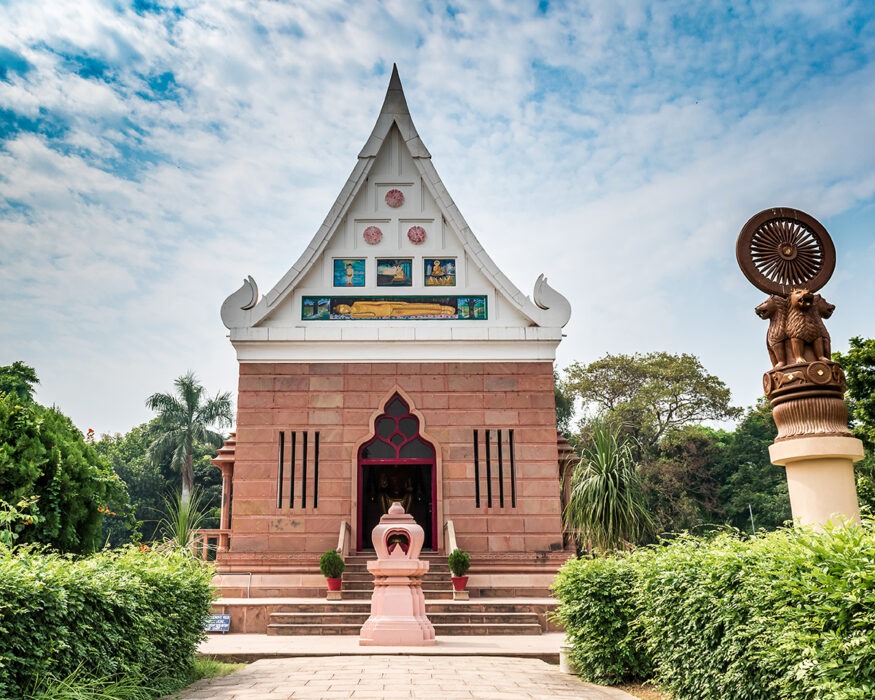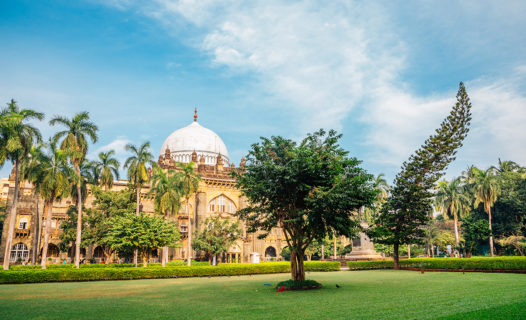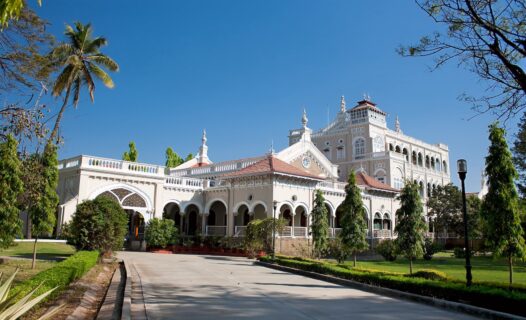Welcome to Sarnath: A Sacred Journey Awaits
Welcome to Sarnath, a serene town that holds a special place in the hearts of Buddhists around the globe. Just a short drive from the bustling city of Varanasi, Sarnath is where Siddhartha Gautama, known as the Buddha, delivered his very first sermon after attaining enlightenment. This pivotal moment in history transformed Sarnath into one of the most revered Buddhist pilgrimage sites, attracting visitors seeking spiritual solace and enlightenment.
As you wander through the peaceful surroundings, you’ll find the Sarnath Museum—a treasure trove of art and artifacts that narrate the rich history of Buddhism. This museum is not just a collection of relics; it’s a gateway into the past, showcasing the evolution of Buddhist art and culture. From intricate sculptures to ancient inscriptions, the exhibits here tell stories that resonate with both history buffs and spiritual seekers alike.
Discovering Sarnath Museum: A Treasure Trove of Art and Artifacts
The Sarnath Museum serves a vital purpose in preserving the heritage of one of the world’s oldest religions. Established in 1910, it houses an impressive collection of artifacts that date back to the 3rd century BCE, including stunning sculptures and architectural fragments from the nearby archaeological site. This museum is a must-visit for anyone keen on exploring the roots of Buddhism and its artistic expressions.
Among the key exhibits, you’ll find remarkable Buddha relics that reflect the profound spiritual heritage of the area. Look out for the iconic Lion Capital of Ashoka, a symbol of India’s national pride, which once adorned the top of the Ashoka Pillar. The museum also features stunning carvings and statues that illustrate the life of Buddha, providing a visual narrative that is both engaging and enlightening.
What sets the Sarnath Museum apart from other museums is its focus on the stories behind each exhibit. Many articles may gloss over these details, but here, you’ll find insights into the significance of each artifact, enhancing your appreciation of the rich tapestry of Buddhist history. Whether you’re an avid history enthusiast or just curious about the cultural legacy of Buddhism, the Sarnath Museum offers a unique experience that invites you to linger and reflect.
Sarnath Attractions: Beyond the Museum
While the Sarnath Museum is undeniably a highlight, there’s so much more to explore in this tranquil town. After soaking in the history at the museum, why not venture out to discover some of Sarnath’s other captivating historical landmarks? Here are a few must-visit attractions that beautifully complement your museum experience.
Dhamek Stupa
Just a stone’s throw away from the museum, the magnificent Dhamek Stupa stands tall as a testament to Sarnath’s significance in Buddhist history. This impressive structure, built in the 5th century, marks the spot where Buddha is believed to have delivered his first sermon. Its intricate carvings and towering presence make it a perfect spot for photography enthusiasts. As you stand before the stupa, take a moment to appreciate its architectural grandeur and the profound history that surrounds it.
Ashoka Pillar
Another iconic landmark is the Ashoka Pillar, which is famous for its four majestic lions that symbolize strength and courage. This pillar is not just an architectural wonder; it’s a symbol of peace and the Buddhist ethos. The site is serene, making it an ideal place for meditation or quiet reflection. Don’t forget to capture a few pictures here—the pillar is a stunning backdrop!
Mulagandha Kuti Vihara
As you continue your exploration, make sure to visit the Mulagandha Kuti Vihara, a modern temple that houses beautiful murals depicting the life of the Buddha. The temple is a peaceful retreat, offering visitors a chance to immerse themselves in meditation and spirituality. The intricate artwork and tranquil atmosphere create a perfect setting for contemplation.
These attractions highlight the historical significance and cultural richness of Sarnath, making it a destination that goes beyond the museum. Each site offers its own unique glimpse into the past, inviting you to connect with the spiritual heritage of this remarkable place.
Sarnath History: The Birthplace of Buddhism
Sarnath is not just a town; it’s a living tapestry of history, spirituality, and cultural evolution. This sacred site is where Siddhartha Gautama, after achieving enlightenment, shared his profound insights with the world. The very air here seems to hum with the echoes of his teachings, making it a pilgrimage destination for countless souls seeking wisdom and peace.
As you stroll through Sarnath, imagine the scene over 2,500 years ago: a quiet grove where the Buddha spoke to his first five disciples, imparting the Four Noble Truths and the Eightfold Path. The significance of this moment cannot be overstated, as it laid the foundation for Buddhism, which would go on to touch millions of lives across the globe. Sarnath’s evolution from a serene forest to a bustling pilgrimage site is a fascinating journey through ancient Indian history, marked by the rise and fall of empires, the construction of stupas, and the establishment of monasteries.
Folklore adds another layer to Sarnath’s rich narrative. Legends speak of the deer park where the Buddha delivered his first sermon, a place that symbolizes peace and harmony. Visitors often feel a deep connection to the land, as if they are walking in the footsteps of spiritual giants. The stories of devotion, enlightenment, and the quest for knowledge breathe life into the historical landmarks, inviting you to explore the depths of Sarnath’s cultural heritage.
Crafting the Perfect Sarnath Travel Itinerary
Planning your Sarnath adventure? Here’s a handy itinerary to help you make the most of your visit! Whether you’re a history buff, a spiritual seeker, or simply looking to soak in the serene atmosphere, this guide will ensure you hit all the highlights.
Morning: Start with Spiritual Reflection
Begin your day early at the Sarnath Museum to avoid crowds and fully appreciate the artifacts. Spend around 2 hours exploring the exhibits, including the mesmerizing Buddha relics and the Lion Capital of Ashoka. After soaking in the history, head to the nearby Dhamek Stupa for some stunning photo opportunities. This iconic structure is not only a visual feast but also a place to reflect on the teachings of the Buddha.
Lunch: Local Flavors
After your morning adventures, treat yourself to a delicious lunch at a local eatery. Sarnath offers an array of dining options where you can savor traditional Indian cuisine. Don’t miss out on trying chole bhature or paneer tikka—they’re local favorites!
Afternoon: Explore More Historical Sites
Post-lunch, visit the Ashoka Pillar and take a moment to appreciate its historical significance. Spend some time meditating in its peaceful surroundings. Afterward, make your way to the Mulagandha Kuti Vihara, where you can admire the beautiful murals and perhaps even join in a meditation session.
Evening: Sunset and Reflection
As the day winds down, find a quiet spot near the Dhamek Stupa to watch the sunset. The golden hues against the backdrop of the stupa create a magical atmosphere, perfect for reflection. To wrap up your day, consider joining a local guided tour to learn more about the spiritual significance of Sarnath.
This itinerary allows you to immerse yourself in Sarnath’s history and spirituality while enjoying the local culture. Make sure to wear comfortable shoes and bring your camera to capture the beauty around you!
Culinary Adventures in Sarnath: A Taste of Local Delights
After a day of exploring, your taste buds deserve a treat! Sarnath’s culinary scene is a delightful mix of traditional Indian flavors and local specialties. From street food stalls to cozy restaurants, there’s something for every palate.
Must-Try Dishes
Start with litti chokha, a popular dish made of wheat balls stuffed with roasted gram flour and served with mashed vegetables. This hearty meal is perfect after a day of sightseeing. For something sweet, indulge in kheer, a creamy rice pudding flavored with cardamom and garnished with nuts—it’s a local favorite that you won’t want to miss!
Dining Spots
Here are a few dining spots that you should check out:
- Vishal Restaurant: Known for its delicious thalis and friendly service.
- Deer Park Restaurant: A charming spot with a beautiful view, perfect for unwinding after a long day.
- Local Street Vendors: Don’t hesitate to sample street food—try the pani puri for a burst of flavor!
Exploring Sarnath through its food is not just a meal; it’s an experience that connects you to the culture and people of this sacred town. So, loosen your belt and get ready to feast!
Festivals and Events: Celebrating Culture in Sarnath
Sarnath comes alive during festivals, especially during Buddha Purnima, which celebrates the birth, enlightenment, and death of the Buddha. This event attracts pilgrims and tourists alike, creating a vibrant atmosphere filled with prayers, rituals, and cultural performances.
What to Expect
During Buddha Purnima, the streets of Sarnath are adorned with colorful decorations, and you can witness various ceremonies at the stupas and temples. Local monks chant prayers, and there are often processions where devotees offer flowers and light lamps. It’s a sight to behold and a wonderful opportunity to connect with the local culture.
Festival Dates
Buddha Purnima usually falls in April or May, depending on the lunar calendar. Check local listings for specific dates and events happening during your visit. Participating in these festivities will enrich your experience and give you a deeper understanding of the spiritual significance of Sarnath.
Practical Information for Travelers: Tips and Insights
Before you set off on your Sarnath adventure, here’s some essential visitor information to make your journey smooth and enjoyable.
Visitor Information
- Opening Hours: The Sarnath Museum is open from 9:00 AM to 5:00 PM, except on Fridays. Plan your visit accordingly!
- Entry Fees: There is a nominal fee for entering the museum, and it’s worth every penny for the treasures you’ll find inside.
- Guidelines: Be respectful of the sacred sites. Dress modestly and maintain a quiet demeanor, especially in places of worship.
Accessibility
Sarnath is generally accessible to all visitors. If you have mobility concerns, inquire about facilities at the museum and surrounding sites. Most attractions are within walking distance, but consider hiring a local guide for a more enriched experience.
Transportation Tips: Getting to and Around Sarnath
Getting to Sarnath is easy, especially since it’s just a short drive from Varanasi. Here are some transportation tips to help you navigate your way:
Reaching Sarnath
- Taxis and Auto-Rickshaws: These are readily available in Varanasi. Negotiate the fare beforehand or ask your hotel for assistance.
- Bicycles: For the adventurous, renting a bicycle is a great way to explore Sarnath at your own pace!
- Walking Tours: Many visitors enjoy walking tours to soak in the serene environment and visit multiple sites in one go.
Getting Around Sarnath
Once you’re in Sarnath, most attractions are within walking distance. Be sure to wear comfortable shoes as you explore the historical landmarks and soak in the peaceful atmosphere.
Nature Walks and Outdoor Activities: Enjoying Sarnath’s Scenic Beauty
For those who love the outdoors, Sarnath offers beautiful nature walks and serene spots where you can connect with nature. The lush greenery surrounding the archaeological sites provides a peaceful backdrop for a leisurely stroll.
Nature Walks
Take a stroll through the Deer Park, where you can find tranquil paths lined with trees and the gentle rustle of leaves. This area is not just significant for its historical context but also a delightful escape for nature lovers. Birdwatchers will especially enjoy spotting various species that inhabit the area.
Outdoor Activities
Consider joining a guided eco-tour that focuses on the local flora and fauna. These tours often include visits to nearby villages, where you can learn about sustainable practices and the community’s connection to the land.
Shopping in Sarnath: Local Markets and Unique Souvenirs
Shopping in Sarnath is a delightful experience, offering a mix of spiritual artifacts and local crafts. The markets here are vibrant and full of character, making them a great place to pick up unique souvenirs.
Local Markets
Visit the local market near the Sarnath Museum, where you can find beautiful handicrafts, prayer flags, and Buddhist relics. Don’t forget to haggle a bit—it’s part of the fun! Look for:
- Handcrafted Statues: Perfect for adding a touch of spirituality to your home.
- Prayer Beads: A meaningful souvenir that connects you to the teachings of the Buddha.
- Local Spices: Take home some flavors of India to spice up your cooking!
Shopping in Sarnath is not just about buying; it’s about connecting with the local culture and taking a piece of it home with you.
Seasonal Travel Insights: Best Times to Visit Sarnath
The best time to visit Sarnath is from October to March when the weather is pleasant and perfect for exploring. The winter months bring cooler temperatures, making it comfortable for sightseeing.
Weather Breakdown
- October to March: Ideal for outdoor activities and exploring historical sites.
- April to June: Hotter months; if you visit during this time, plan for early morning or late afternoon excursions.
- July to September: Monsoon season; while the rains can be refreshing, be prepared for occasional downpours.
Understanding the seasonal weather can help you plan your visit effectively and ensure you have the best experience possible.
Safety and Health Guidelines: Travel Smart in Sarnath
Your safety is paramount while exploring Sarnath. Here are some handy tips to keep in mind:
Health Tips
- Stay Hydrated: Carry a water bottle, especially during warmer months.
- Food Safety: Enjoy local cuisine but opt for cooked dishes to avoid any stomach issues.
- Travel Insurance: Consider getting travel insurance for peace of mind during your trip.
Safety Tips
Sarnath is generally safe, but like any travel destination, it’s wise to stay aware of your surroundings. Avoid isolated areas after dark and keep your belongings secure. If you’re traveling alone, consider joining a group tour for added safety and companionship.
Commonly Asked Questions (FAQs) About Visiting Sarnath
Here are some frequently asked questions to help you plan your visit to Sarnath:
What is the best time to visit Sarnath?
The best time is from October to March when the weather is pleasant for sightseeing.
How do I get to Sarnath from Varanasi?
You can take a taxi, auto-rickshaw, or even rent a bicycle for a fun ride!
Are there any guided tours available?
Yes, several local guides offer tours that cover the key attractions and provide insights into the history and culture of Sarnath.
What should I wear while visiting temples and stupas?
Dress modestly and comfortably. It’s respectful to cover your shoulders and knees in places of worship.
Can I take photographs at the museum and historical sites?
Photography is allowed in many areas, but always check for any specific restrictions at each site.
Fun Facts About Sarnath: Quirky Tidbits to Enhance Your Visit
Ready for some fun facts? Here are a few quirky tidbits about Sarnath that will make your visit even more enjoyable:
- Sarnath is home to the world-famous Lion Capital of Ashoka, which is also the national emblem of India!
- The Dhamek Stupa is believed to be built on the very spot where the Buddha delivered his first sermon—how cool is that?
- Every year, thousands of pilgrims visit Sarnath, making it one of the most significant Buddhist pilgrimage sites in the world.
These fun facts not only enrich your understanding of Sarnath but also make for great conversation starters with fellow travelers!



















